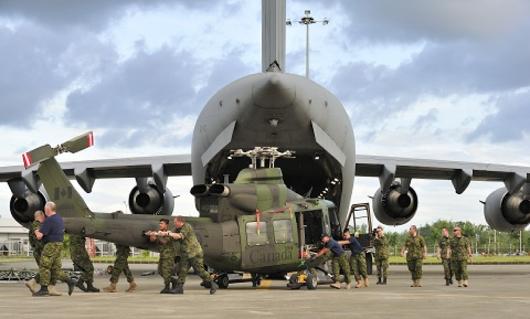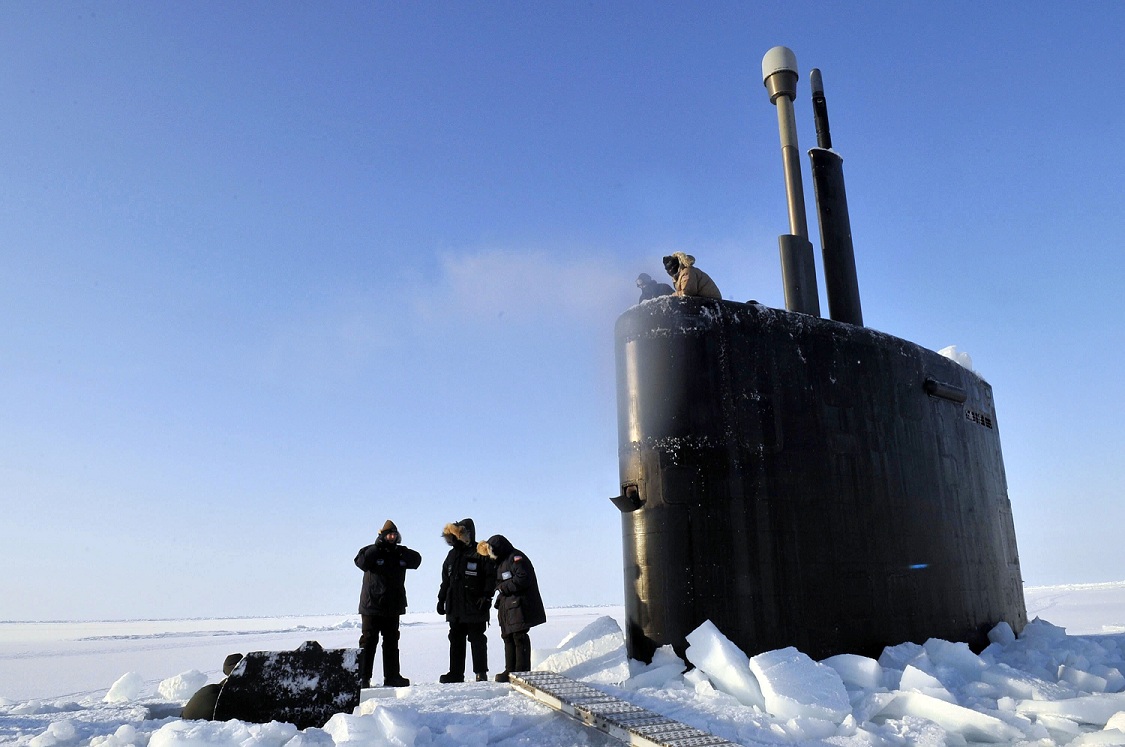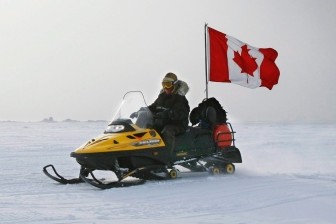[captionpix align=”left” theme=”elegant” width=”320″ imgsrc=”http://natoassociation.ca/wp-content/uploads/2012/11/Sandy_Final.jpg ” captiontext=””]
Hurricane Sandy is a grim reminder of the unpredictability and havoc that weather can have on state coffers and business revenues. Preliminary estimates reveal the outlay of business interruption surpasses $50 billion, which, if confirmed, would make Sandy the second-costliest Atlantic hurricane in history, behind only Hurricane Katrina. Canada, on the other hand has been fortunate as of late, to avoid major storms such as Sandy, which have devastated economies. With Canada’s Department of National Defence (DND) teetering on the edge of the fiscal cliff―DND operating budget for fiscal year 2012/2013 will decrease by seven percent― natural disaster preparedness programs could be at risk.
With austerity rearing its ugly head, emergency contingency plans could be left flayed. The current budget mandate from the Harper government is to lower spending via a reduction in the amount of benefits and public services. This forces government departments to solely focus on developing fiscally responsible policies that produce less for less. Furthermore, with the verisimilitude rhetoric of a ‘dangerous world’, where conceivably at any time a terrorist attack or major conflict can erupt, governments tend to allocate more funding for counter-terrorism rather than for natural disaster preparedness.
The merits and drawbacks concerning the allocation of funds for national security while methodically undercutting natural disaster preparedness is beyond the scope of this article. We will assume national governments, such as the current Canadian government, will continue to spend large amount of money on national security, as it is politically more rewarding.
Even with major cuts to DND’s operating budget, there is a way in which the Harper government can efficiently maintain a strong emergency contingency plan, and at the same time, cut cost―cue in the The Primary Reserve of the Canadian Forces!
Today, the Canadian Forces claim to have reserves, but they are not reserves in the sense of a skeletonised army of part-time solders that could be mobilized in emergency and completely manned through the addition of citizen volunteers. Instead, the Primary Reserve―Army, Navy, and Air force― has effectively focused almost all attention on reinforcing the overstretched regular army with Primary Reserve augmentation in Afghanistan. Mobilization simply disappeared from the military lexicon. The lack of mobilization in Primary Reserves policy could have a pernicious effect on natural disaster preparedness, because not having an adequate number of troops to mobilize for a national emergency, even remotely approaching the scale of Sandy, would be an outright national disgrace.
The Primary Reserve is the most efficient instrument the Canadian government has at its disposal to protect critical infrastructure, deploy urban search and rescue, and to mobilize troops in the event of a disaster all while reducing costs. The Canadian predicament of having too small an army because of fiscal inability to afford a larger Regular Force can be resolved by increasing the size of the Primary Reserve. For example, the Primary Reserve is capable of fielding more full-time citizen-soldiers because reservists are far less expensive than Regular Force service members whose wages, housing, pensions, and other standing army overheads cost 80 percent more. The cost of wages for a hypothetical 18,500 Primary Reserve soldiers would be around $200 million as compared to about $800 million for 17,500 regular army soldiers. The Reserve serves as an economical avenue for reducing deficit spending while maximizing taxpayers’ dollars.
Traditionally, floods, ice storms, and forest fires have been left to the Reserves, so they are ideally suited for other non-military crises, such as nuclear meltdowns, major chemical spills, and various other environmental disasters. The Primary Reserve of the Canadian Forces is the footprint of the military in the Canadian community and the bridge that connects the Canadian public and the Regular Forces together. Most communities want local reserve units to be more closely involved in emergency planning and execution. The current government should follow suit with previous governments in increasing National Defence reserves to be available for civil preparedness, such as natural disasters and local emergencies.
Fiscal restraint could jeopardize Canada’s natural disaster preparedness program, but with the devastation Sandy has brought to New York, the Canadian government might be wise to reconsider. The notion that one has to choose between either austerity or a larger force is short-sighted and naive. The Primary Reserve can be expanded while simultaneously saving taxpayers’ money. The induction of citizen-soldiers on short-term engagements for full-time duty could better meet the needs of domestic operations. As Lt. Col.-Dr. John A. English proposes, “reorienting the Canadian army to accommodate part-time and short-term service would save personnel costs while increasing manning.” A community-based Primary Reserve meets the criteria of fiscal conservatism.
Furthermore, local governments have the support they need to improve their own disaster prevention, preparedness, response, and recovery capacities. It is up to municipalities to reach out to DND and ask for assistance in the case of an emergency. As a result, the Reserves do not have to act as a force-in-being for national emergencies. Instead, they can be a force-in-waiting that is ready to mobilize when local governments need reinforcement to reduce their vulnerability to hazards and improve their own disaster prevention and preparedness capacities. This approach significantly reduces overhead expenditure for personal costs―which makes up about 51 to 57 percent of the defence budget―that is not needed for part-time reservists.
The capriciousness of storms like Sandy is impossible to prevent, but maintaining a strong natural disaster preparedness program can help shelter Canada from the storm. Being able to quickly mobilize during the event of a national emergency makes all the difference in the world. It can save millions of dollars in infrastructure damage, but more importantly, it can save lives. The strength of the Primary Reserve is dependent on the current government. With a robust Primary Reserve strategy―which should include going beyond the mandate of having 30,000 reservist by 2080― the government would have an adequate national military footprint to provide timely mobilization should the need arise.




